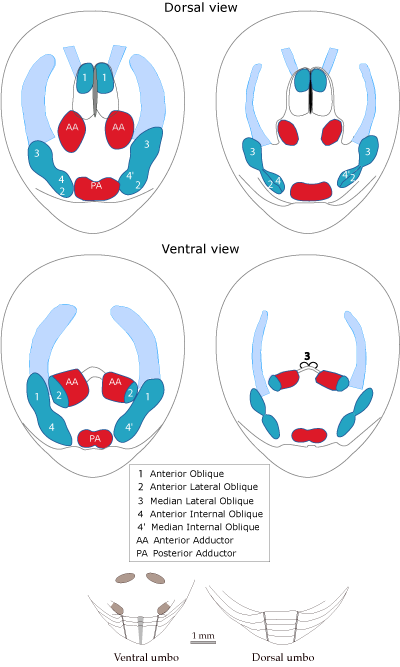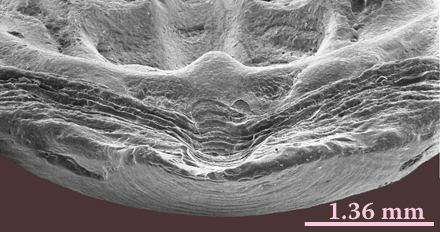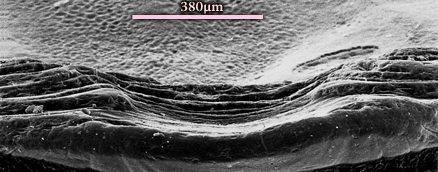 |
|
|||
|
Genus Schmiditites Schuchert & LeVene, 1929 nom. subst. pro Schmidtia Volborth, 1869 (non Balsamo-Crivelli, 1863) |
[Schmidtites celatus (Volborth, 1869), originally described under the name Schmidtia celata Volborth, 1869, p. 732]
New diagnosis (in Emig, 2006 - see reference below) Bi-symmetrical muscle arrangement (*)
Ventral valve: Dorsal valve: Vascula lateralia (main mantle canals) of both sides subparallel to slightly curved. Shell to subcircular to oval in outline. External surface smooth, with fine concentric growth. Upper Cambrian and Lower Ordovician (Tremadoc) (*) Nota : The Posterior Internal Oblique muscle (numbered 4": Emig 1982) is at present only known in Lingula, Glottidia and Lingularia, which have an asymmetrical muscle arrangement. This feature is probably for the family diagnosis (see above) |
|
| |
| Species of Schmidtites |
|
Umbonal region of ventral valves (internal view)
|
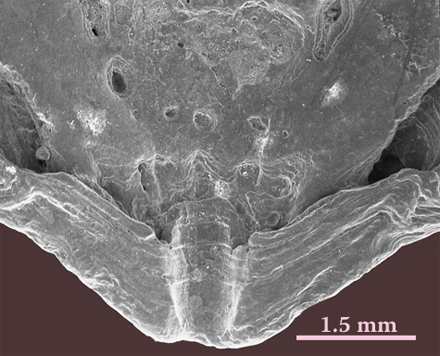 |
Umbonal region of dorsal valves (internal view)
|
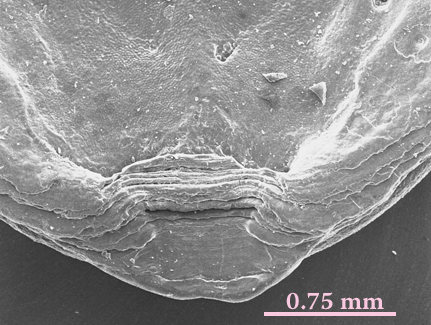 |

